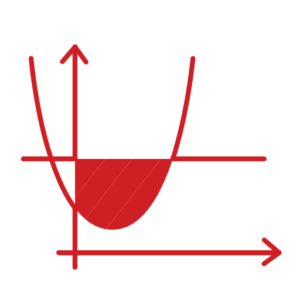Course Name: Language Arts
Course Description
In Grade 5 Language, our students will explore different texts and forms of media. They will start their journey to mastery of the English language.

Curriculum Information:Language (2008)

Course Developer: Canadian Global School

Development Date: 2022
Course Outline
Grade-5 Language Arts - Total Hours (158 Hours)
Unit One: Short Stories (31Hours)
Unit Two: Novel Study - Part A (31- Hours)
Unit Three: Novel Study - Part B (31 Hours)
Unit Four: Non-fiction (31 Hours)
Unit 5: General Reading and Writing (34 Hours)
Resources Needed
This course is entirely online and does not require nor rely on any textbook. Students will need the following resources:
- Laptop and/or personal computer (preferably with Google Chrome or Mozilla Firefox as a web browser)
- Stable internet connection
- A scanner, smartphone camera, or similar device to digitize handwritten or hand-drawn work
- Access to video recording and handwritten work scanning (mobile phone, tablet, iPad, webcams)
Resources required by the student:
- A scanner, smartphone camera, or similar device to upload handwritten or hand-drawn work,
- Laptop and/or personal computer (preferably with Google Chrome or Mozilla Firefox as a web browser)
- Access to video recording and handwritten work scanning (mobile phone, tablet, iPad, webcams)
- Stable internet connection
Note: This course is entirely online and does not require or rely on any textbook.
Resources provided by Canadian Global School
- Access to Google Suites or Microsoft Education for word processing software and presentation software. (The school will distribute accounts to students).
- Supplemental Readings

Teaching Strategies
Using a variety of instructional strategies, the teacher will provide numerous opportunities for students to develop skills of inquiry, problem-solving, and communication as they investigate and learn fundamental concepts. The integration of critical thinking and critical inquiry skills will provide a powerful tool:
- Interact in student-paced and instructor-paced interactive, engaging instructional lessons.
- Understand the value of diversity in learning and society
- Develop self-confidence and self-advocacy skills
- Refine their existing compensatory strategies (reading strategies, writing strategies, listening strategies, study strategies, researching strategies, strategies for memory, organizational strategies, and time management strategies) for learning and develop additional strategies to help meet their potential as learners and use throughout the elementary grades.
- Cultivate problem-solving skills to become independent learners.
- Opportunities to learn in various ways- individually, cooperatively, independently, with teacher direction, hands-on experiences, and through examples followed by practice.
- Accomplish prompts on interactive lessons; students can reflect on different texts. In addition, constant communication with teachers ensures that the students understand complex topics and apply them in their writing. They can also accomplish other tasks using animations, videos, discussion forums, live chat, and other interactive objects.
The course relies on the help of a teacher to support young learners through the lessons. The teacher will be working on facilitating the course content and participating in discussions to support students in developing communication skills.
Course Name:Math
Course Description
In Grade 5 Math, our students will continue to improve their math skills by investigating numbers and operations found in technology and the real world. They will learn more about geometry, and shape, budgeting as part of their financial literacy, and how code is regulated in various ways.

Curriculum Information:Mathematics (2020)

Course Developer: Canadian Global School

Development Date: 2022
Course Outline
Grade-5 Math -Total Hours (158 Hours)
Unit One: Number Sense and Operations (31-Hours)
Unit Two: Patterns, Relationships, Equations, Equalities, and Coding (31-Hours)
Unit Three: Data and Probability (31-Hours)
Unit Four: Geometric and Spatial Reasoning, and Measurement (31-Hours)
Unit Five: Money and Finances (34-Hours)
Resources required by the student:
- A scanner, smartphone camera, or similar device to upload handwritten or hand-drawn work,
- Laptop and/or personal computer (preferably with Google Chrome or Mozilla Firefox as a web browser)
- Access to video recording and handwritten work scanning (mobile phone, tablet, iPad, webcams)
- Stable internet connection
Resources provided by Canadian Global School
- Access to Google Suites or Microsoft Education for word processing software and presentation software. (The school will distribute accounts to students).
- Supplemental Readings
Note: This course is entirely online and does not require or rely on any textbook.
Resources Needed:
This course is entirely online. It does not require nor rely on any textbook.
Students will need the following resources:
- Laptop and/or personal computer (preferably with Google Chrome or Mozilla Firefox as a web browser)
- Stable internet connection
- A scanner, smartphone camera, or similar device to digitize handwritten or hand-drawn work
- Access to video recording and handwritten work scanning (mobile phone, tablet, iPad, webcams)
- Various household items to complete offline activities

Teaching Strategies
Using various instructional strategies, the teacher will provide numerous opportunities for students to develop inquiry, problem-solving, and communication skills as they investigate and learn fundamental concepts. The integration of critical thinking and critical inquiry skills will provide a powerful tool for reasoning and problem solving and is reflected in a meaningful blend of both process and content.
Throughout this course, students will:
- Interact in student-paced and instructor-paced interactive, engaging instructional lessons.
- Understand the value of diversity in learning and in society
- Develop self-confidence and self-advocacy skills
- Refine their existing compensatory strategies for learning and develop additional strategies to help meet their potential as learners and use them throughout the elementary grades.
- Cultivate problem-solving skills to become independent learners.
- Opportunities to learn in various ways- individually, cooperatively, independently, with teacher direction, through hands-on experiences, and through examples followed by practice.
- Accomplish prompts on interactive lessons. Students can reflect on different texts. In addition, constant communication with teachers ensures that the students understand complex topics and apply them in their writing. They can also accomplish other tasks by using animations, videos, discussion forums, live chat and other interactive objects.
The course relies on the help of a teacher to support young learners through the lessons. The teacher will be working in facilitating the course content and participating in the discussions to support students in developing communication skills
Course Name:Science
Course Description
In Grade 5 Science, our students are introduced to the human body and its organs. They will study how forces affect structures and mechanisms. In addition, they will learn how matter can change and be changed, and the effect these changes can have on the environment.

Curriculum Information: Science (2022)

Course Developer: Canadian Global School

Development Date: 2022
Course Outline
Grade-5 Science -Total Hours (95 Hours)
Unit One: Human Organ Systems (24Hours)
Unit Two: Forces acting on structures and mechanisms (24-Hours)
Unit Three: Properties of and Changes in Matter (24-Hours)
Unit Four: Conservations of Energy and Resources (23-Hours)
Resources required by the student:
- A scanner, smartphone camera, or similar device to upload handwritten or hand-drawn work,
- Laptop and/or personal computer (preferably with Google Chrome or Mozilla Firefox as a web browser)
- Access to video recording and handwritten work scanning (mobile phone, tablet, iPad, webcams)
- Stable internet connection
Resources provided by Canadian Global School
- Access to Google Suites or Microsoft Education for word processing software and presentation software. (The school will distribute accounts to students).
- Supplemental Readings
Note: This course is entirely online and does not require or rely on any textbook.
Resources Needed:
This course is entirely online and does not require nor rely on any textbook. Students will need the following resources:
- Stable internet connection
- A scanner, smartphone camera, or similar device to digitize handwritten or hand-drawn work
- Access to video recording and handwritten work scanning (mobile phone, tablet, iPad, webcams)
- Various household items to complete offline activities

Teaching Strategies
Using a variety of instructional strategies, the teacher will provide numerous opportunities for students to develop skills of inquiry, problem-solving, and communication as they investigate and learn fundamental concepts.
The integration of critical thinking and critical inquiry skills will provide a powerful tool for reasoning and problem solving and is reflected in a meaningful blend of both process and content.
Throughout this course, students will:
- Interact in student-paced and instructor-paced interactive, engaging instructional lessons.
- Develop self-confidence and self-advocacy skills
- Refine their existing compensatory strategies for learning and develop additional strategies to help meet their potential as learners and use them throughout the elementary grades.
- Cultivate problem-solving skills to become independent learners.
- Opportunities to learn in various ways- individually, cooperatively, independently, with teacher direction, through hands-on experiences, and through examples followed by practice.
- Accomplish prompts on interactive lessons. Students can reflect on different texts. In addition, constant communication with teachers ensures that the students understand complex topics and apply them in their writing. They can also accomplish other tasks by using animations, videos, discussion forums, live chat and other interactive objects.
Course Name: Computer Science
Course Description
In Grade 5 Computer Science, students will continue to cover important computer programming concepts such as variables. Students will build fun games and stories. Students can choose their themes based on their interests while learning new coding capabilities. They are challenged to be creative and solve challenging problems while learning the more profound computer science concepts.

Course Developer: Canadian Global School

Development Date: 2022
Course Outline
Grade-5 Computer Science -Total Hours (63 Hours)
Unit One: Intro to Programming (8-Hours)
Unit Two: Conditionals (8-Hours)
Unit Three: Loops (8-Hours)
Unit Four: Functions (8-Hours)
Unit Five: Variables (10-Hours)
Unit 6: JavaScript Basics (21-Hours)
Resources required by the student:
- A scanner, smartphone camera, or similar device to upload handwritten or hand-drawn work,
- Laptop and/or personal computer (preferably with Google Chrome or Mozilla Firefox as a web browser)
- Access to video recording and handwritten work scanning (mobile phone, tablet, iPad, webcams)
- Stable internet connection
Resources provided by Canadian Global School
- Access to Google Suites or Microsoft Education for word processing software and presentation software. (The school will distribute accounts to students).
- Supplemental Readings
Note: This course is entirely online and does not require or rely on any textbook.
Resources Needed:
This course is entirely online and does not require nor rely on any textbook. Students will need the following resources:
- Laptop and/or personal computer (preferably with Google Chrome or Mozilla Firefox as a web browser)
- Stable internet connection

Teaching Strategies
Using a variety of instructional strategies, the teacher will provide numerous opportunities for students to develop skills of inquiry, problem-solving, and communication as they investigate and learn fundamental coding concepts. The integration of critical thinking and critical inquiry skills will provide a powerful tool for reasoning and problem solving, and is reflected in a meaningful blend of both process and content. Throughout this course, students will:
- Interact in student-paced and instructor-paced interactive, engaging instructional lessons.
- The content is web-based, with students writing and running code in the browser.
- Teachers utilize tools and resources provided by Kodable to leverage time in the classroom and give focused 1-on-1 attention to students.
Course Name: Social Studies
Course Description
In Grade 5 Social Studies,students will learn about Indigenous peoples, European settlers and their interactions. They will analyze the impacts of these interactions in the past and present. Students will then learn about the role and structure of different levels of government. They will understand how both citizens and governments work together to address diverse social and environmental issues.

Curriculum Information:Social Science (2018)

Course Developer: Canadian Global School

Development Date: 2022
Course Outline
Grade -5 Social Studies - Total Hours (63 Hours)
Unit A: Interactions of Indigenous Peoples and Europeans (31-Hours)
Unit Two: The Role of Government and Responsible Citizenship (32-Hours)
Furthermore, students will explore ways in which citizens and governments can take action together to address social and environmental issues. Finally. students will create their plans of action for a social and an environmental issue, including the actions governments and citizens should take.
Resources required by the student:
- A scanner, smartphone camera, or similar device to upload handwritten or hand-drawn work,
- Laptop and/or personal computer (preferably with Google Chrome or Mozilla Firefox as a web browser)
- Access to video recording and handwritten work scanning (mobile phone, tablet, iPad, webcams)
- Stable internet connection
Resources provided by Canadian Global School
- Access to Google Suites or Microsoft Education for word processing software and presentation software. (The school will distribute accounts to students).
- Supplemental Readings
Note: This course is entirely online and does not require or rely on any textbook.
Resources Needed:
This course is entirely online and does not require nor rely on any textbook. Students will require the following resources:
- Stable internet connection
- A scanner, smartphone camera, or similar device to digitize handwritten or hand-drawn work
- Access to video recording and handwritten work scanning (mobile phone, tablet, iPad, webcams)

Teaching Strategies
Using a variety of instructional strategies, the teacher will provide numerous opportunities for students to develop skills of inquiry, problem solving, and communication as they investigate and learn fundamental concepts. The integration of critical thinking and critical inquiry skills will provide a powerful tool for reasoning and problem solving, and is reflected in a meaningful blend of both process and content Throughout this course students will:
- Interact in student-paced and instructor-paced interactive, engaging instructional lessons.
- Understand the value of diversity in learning and in society
- Develop self-confidence and self-advocacy skills
- Refine their existing compensatory strategies for learning and develop additional strategies to help meet their potential as learners and use them throughout the elementary grades.
- Cultivate problem-solving skills to become independent learners.
- Opportunities to learn in various ways- individually, cooperatively, independently, with teacher direction, through hands-on experiences, and through examples followed by practice.
- Accomplish prompts on interactive lessons, students can reflect on different texts. In addition, constant communication with teachers ensures that the students understand complex topics and apply them in their writing. They can also accomplish other tasks through the use of animations, videos, discussion forums, live chat and other interactive objects.
- The course relies on the help of a teacher to support young learners through the lessons. The teacher will be working in facilitating the course content and participating in discussions to support students in developing communication skills.
Course Name:French
Course Description
In Grade 5, our students will practice speaking about themselves, their friends and family and express their interests. Students will discover facts, tales and myths about domestic and wild animals. They will explore and learn about different communities in Canada through media texts and short interviews.

Curriculum Information:French (2013)

Course Developer: Canadian Global School

Development Date: 2022
Course Outline
Grade -5 French - Total Hours (158 Hours)
Unit One: La grande aventure (31-Hours)
Unit Two: Ce que j’aime (31-Hours)
Unit Three: La Famille (31-Hours)
Unit Four: Les animaux: Mythes et réalités (31-Hours)
Unit Five: Multicultural communities (34-Hours)
Resources required by the student:
- A scanner, smartphone camera, or similar device to upload handwritten or hand-drawn work,
- Laptop and/or personal computer (preferably with Google Chrome or Mozilla Firefox as a web browser)
- Access to video recording and handwritten work scanning (mobile phone, tablet, iPad, webcams)
- Stable internet connection
Resources provided by Canadian Global School
- Access to Google Suites or Microsoft Education for word processing software and presentation software. (The school will distribute accounts to students).
- Supplemental Readings
Note: This course is entirely online and does not require or rely on any textbook.
Resources Needed:
This course is entirely online and does not require nor rely on any textbook. Students will require the following resources:
- Laptop and/or personal computer (preferably with Google Chrome or Mozilla Firefox as a web browser)
- Stable internet connection
- A scanner, smartphone camera, or similar device to digitize handwritten or hand-drawn work
- Access to video recording and handwritten work scanning (mobile phone, tablet, iPad, webcams)

Teaching Strategies
Using a variety of instructional strategies, the teacher will provide numerous opportunities for students to develop skills of inquiry, problem solving, and communication as they investigate and learn fundamental concepts. The integration of critical thinking and critical inquiry skills will provide a powerful tool for reasoning and problem solving, and is reflected in a meaningful blend of both process and content Throughout this course students will:
- Interact in student-paced and instructor-paced interactive, engaging instructional lessons.
- Understand the value of diversity in learning and in society
- Refine their existing compensatory strategies for learning and develop additional strategies to help meet their potential as learners and use them throughout the elementary grades.
- Cultivate problem-solving skills to become independent learners.
- Opportunities to learn in various ways- individually, cooperatively, independently, with teacher direction, through hands-on experiences, and through examples followed by practice.
- Accomplish prompts on interactive lessons, students can reflect on different texts. In addition, constant communication with teachers ensures that the students understand complex topics and apply them in their writing. They can also accomplish other tasks through the use of animations, videos, discussion forums, live chat and other interactive objects.
- The course relies on the help of a teacher to support young learners through the lessons. The teacher will be working in facilitating the course content and participating in discussions to support students in developing communication skills.







